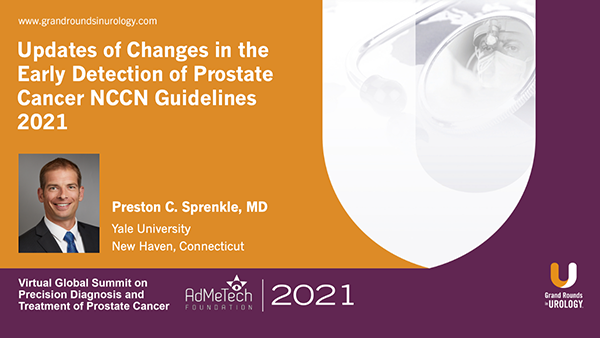Considerations to Improve Screening for Prostate Cancer
Gerald L. Andriole, Jr., MD, outgoing Robert K. Royce Distinguished Professor and Chief of Urologic Surgery at Barnes-Jewish Hospital, the Siteman Cancer Center, and Washington University School of Medicine in St. Louis, Missouri, and incoming Director of Urology in the National Capital Region at the Brady Urologic Institute at Johns Hopkins University, reviews current guidelines for prostate cancer screening and considers how screening can be improved. After an introduction from E. David Crawford, Editor-in-Chief of Grand Rounds in Urology and Professor of Urology at the University of California, San Diego, Dr. Andriole summarizes the AUA, EAU, and NCCN prostate cancer screening guidelines, highlighting the NCCN’s recommendation that men get an early-in-life PSA test to obtain a baseline, and interrogating the validity of the age cut-offs for testing in the AUA and EAU guidelines. He then proposes a series of concepts to improve screening, starting with recommendations on how to better identify which men are at above average risk. Dr. Andriole particularly emphasizes the utility of polygenomic risk scores, which have a high negative predictive value and can focus attention on which patients need to be further screened. He suggests that another key way to improve screening is to reduce confusion about the PSA test among patients and primary care providers by setting a cut-point of 1-1.5 as a threshold for referral to a urologist. Dr. Andriole then considers how to identify patients with clinically-significant prostate cancer earlier, focusing on the need for better biopsies. He also notes the importance of reducing unnecessary repeat and initial biopsies and suggests potentially using biomarkers, MRI, and PSMA-PET to decide whether a biopsy is necessary. After concluding his talk, Dr. Andriole further discusses polygenic risk score, the pros and cons of multiparametric MRI, the benefits of micro-ultrasound, transrectal versus transperineal biopsy, and the future of screening with Dr. Crawford.
Read More
